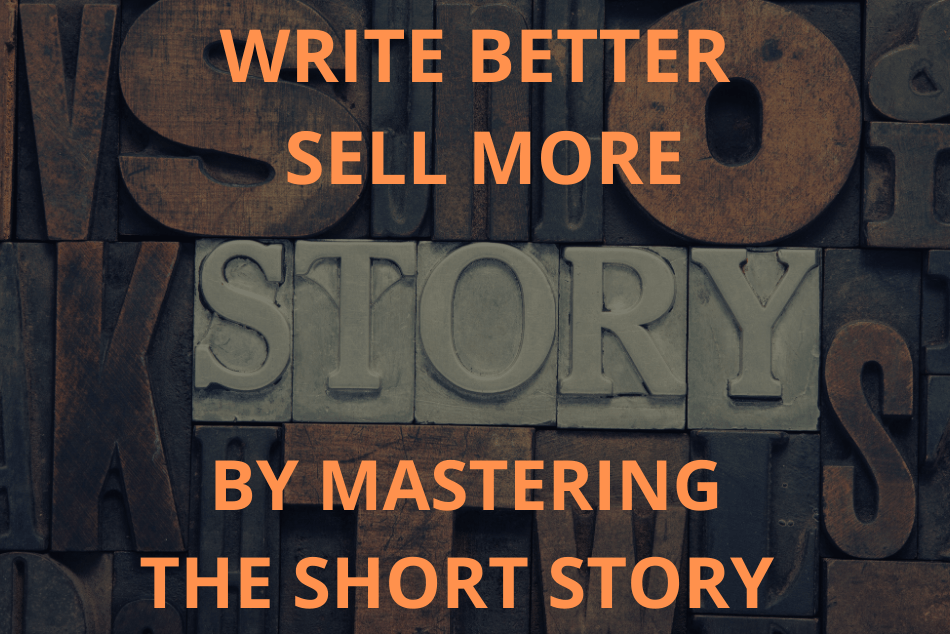Three writers go into a bar. The first writer says, “I wish I wrote more poorly than I do.” The second writer says, “I wish I sold less than I do.” The third writer says, “And then I woke up.”
Wherever you are on your journey, can we agree that you wouldn’t mind writing better or selling more? Maybe even — gasp — both?
Honestly, you might as well say “both” since the solution to each is the same: the almighty short story.
Short stories both teach you to write better and introduce your characters to new readers. (Short stories also give you additional shots at winning awards, but who wants to add fame to the twin burdens of being able to write better and sell more?)
What a Short Story Is and Isn’t
A short story is compact. Condensed. When people say every word counts, what that means is that every sentence reveals character and advances plot and creates setting and informs the reader. For that to happen, every word in that sentence has serve two or three purposes.
A short story is not a chapter of a novel. Because the arcs in a novel are longer, even if the chapter neatly resolves one arc within the length of a typical short story, the chapter fails to satisfy the requirement of every word counting in multiple ways.
You can, however, rewrite that chapter to turn it into a short story. Keep the arc for the structure. Drill sergeant your sentences.
What a Short Story Does and Doesn’t Do
A short story revolves around an epiphany. Events cause a character to realize something that changes everything forever.
If the epiphany appears near the beginning, the story emphasizes the effect on the character. If the epiphany appears near the end, the story emphasizes the character’s reality before the shift and thus highlights what is lost. If the epiphany appears in the middle, the story shows a little of both.
(To challenge yourself: the best short stories also create epiphanies for the reader.)
A short story doesn’t provide a novel in miniature. While with judicious editing you can cut a novel to the length of a short story, once again the sentences aren’t usually nimble enough to do everything required of them.
You can, however, draw on that novel’s structure while you create a short story from scratch.
How to Generate an Idea for a Short Story
Maybe you see a character. Maybe you hear a snatch of dialogue. Maybe you think of a phrase that captures a setting. Maybe you ask an intriguing “what if?” Maybe you want to explore how a character from a novel became the way they are. Maybe you want to experience an avenue of writing unlike what you do in your longer work.
Those are all valid approaches to generating ideas for short stories, and different stories may be approached in different ways.
The sooner you identify the epiphany, the less time you may spend rewriting to foreshadow/reflect that moment.
How to Begin a Short Story
The poor first sentence has two additional jobs. It has to intrigue the reader. It has to convince the reader that they can trust you with their time.
Read the first line of Guy de Maupassant’s 1884 classic The Necklace, and you know you’re in good hands: The girl was one of those pretty and charming young creatures who sometimes are born, as if by a slip of fate, into a family of clerks.
You intrigue the reader by raising a question in their mind that you don’t answer. The reader then has to continue reading to get to that answer.
The question should never be, “What’s happening?” If the reader is confused, they stop reading. Instead of allowing the reader to wonder where events are taking place, tell the reader where events are taking place so that the reader asks how the character got there or how the character will get out.
You convince the reader that they can trust you with their time by demonstrating that you have already committed your time. The easiest way to do that is produce those multi-use sentences where every word counts because you made sure they did so.
Set the scene. Create the character. Raise the question.
Then write the second sentence.
How to End the Short Story
While there are several techniques to ending a short story, they all clearly indicate that the end has arrived. If you think the reader needs to see the words “The End,” you haven’t found your ending yet.
Think of the last line of The Lottery by Shirley Jackson, which debuted in The New Yorker in 1948; I won’t spoil it for you if you haven’t read it (you haven’t read it?) but there’s no doubt that you’ve reached the end of the story.
In a frame tale, you start with a story that introduces the story, and then you end by returning to that outside story.
In a circular story, you end either end with a paragraph that mirrors the opening paragraph, or you end with a paragraph that plays against the opening paragraph.
In a river structure, you create a final sentence that draws together three elements from the first portion of the story. These can be characters, details, ideas.
What to Do Between the Beginning and the End
Have fun. Make your sentences do all the work.

Stephen D. Rogers helps writers write better so that they can sell more. President of the New England chapter, Mystery Writers of America, two-time winner of the Derringer award and short-listed for the Shamus award, Stephen is a popular writing instructor and freelance editor.
He’s published hundreds of short stories in multiple genres in publications as diverse as the Chicken Soup for the Soul books and BORDERLAND NOIR, WOMAN’S WORLD and THE EYES OF TEXAS. You can learn more about him by visiting his website www.StephenDRogers.com or by contacting him directly. ([email protected])





